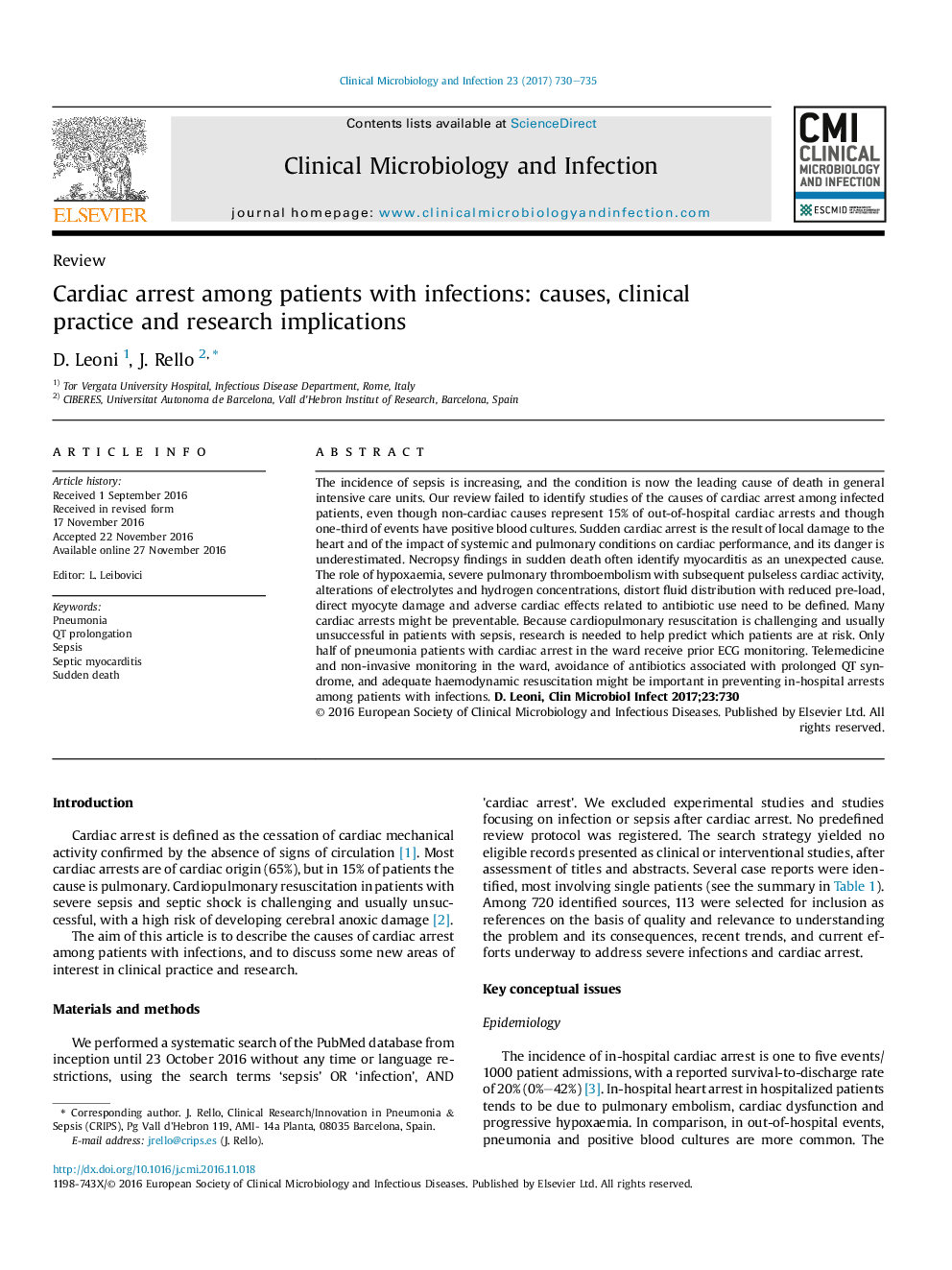| Article ID | Journal | Published Year | Pages | File Type |
|---|---|---|---|---|
| 5671583 | Clinical Microbiology and Infection | 2017 | 6 Pages |
The incidence of sepsis is increasing, and the condition is now the leading cause of death in general intensive care units. Our review failed to identify studies of the causes of cardiac arrest among infected patients, even though non-cardiac causes represent 15% of out-of-hospital cardiac arrests and though one-third of events have positive blood cultures. Sudden cardiac arrest is the result of local damage to the heart and of the impact of systemic and pulmonary conditions on cardiac performance, and its danger is underestimated. Necropsy findings in sudden death often identify myocarditis as an unexpected cause. The role of hypoxaemia, severe pulmonary thromboembolism with subsequent pulseless cardiac activity, alterations of electrolytes and hydrogen concentrations, distort fluid distribution with reduced pre-load, direct myocyte damage and adverse cardiac effects related to antibiotic use need to be defined. Many cardiac arrests might be preventable. Because cardiopulmonary resuscitation is challenging and usually unsuccessful in patients with sepsis, research is needed to help predict which patients are at risk. Only half of pneumonia patients with cardiac arrest in the ward receive prior ECG monitoring. Telemedicine and non-invasive monitoring in the ward, avoidance of antibiotics associated with prolonged QT syndrome, and adequate haemodynamic resuscitation might be important in preventing in-hospital arrests among patients with infections.
